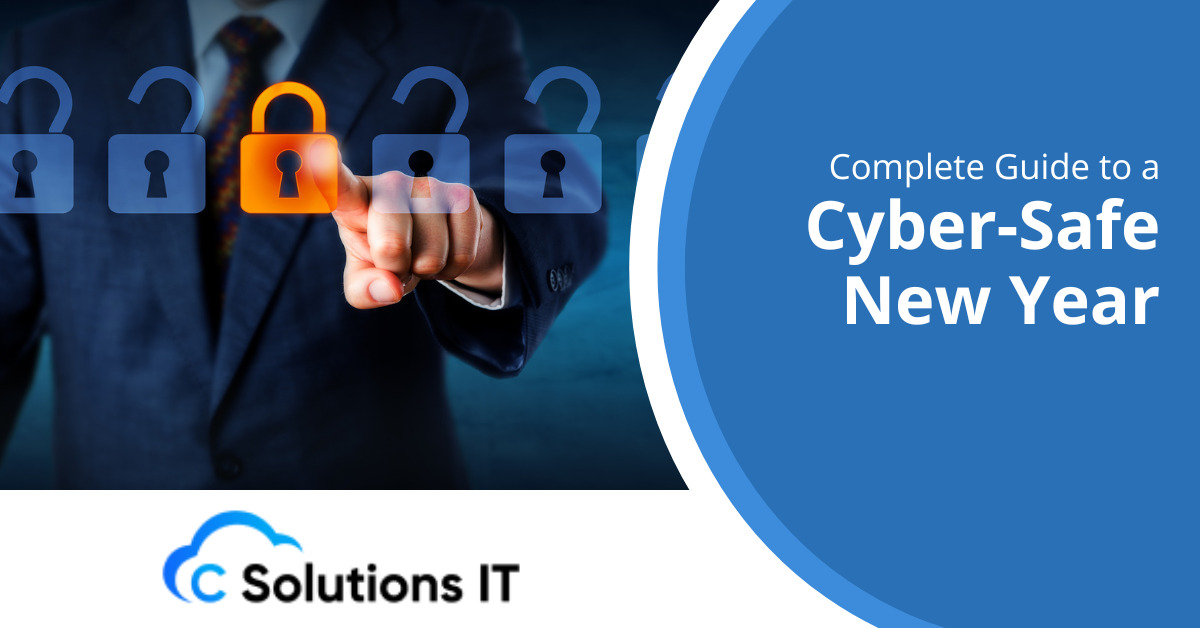Complete Guide to a Cyber-Safe New Year

As we enter a new year, it is important to take care of our digital security. Cyber threats are changing rapidly, and it is more important than ever to stay ahead of the curve. This comprehensive guide will walk you through essential steps to ensure a cybersafe year ahead, covering everything from personal device security to protecting your online identity.
Why is cybersecurity more critical than ever?
In today’s connected world, our lives become more and more intertwined with technology. From smart home devices to online banking and social media, we depend on these digital platforms for almost everything-even the minutest detail in our day-to-day life. This convenience comes along with many cybersecurity perils that we are ignorant about, which we are vulnerable to.
Cybercriminals are always finding new ways of exploiting the weak links in our online protections. These range from data breaches, identity theft, to financial fraud, mainly because the advances in technology continue to make it possible for the sophistication and scale of cyber attacks to rise accordingly.
Securing your personal devices
Regular update and patching
One of the simplest but most efficient ways of securing your devices is by keeping them updated. The software updates normally integrate all the critical security patches that fix newly discovered vulnerabilities. Activate the feature of automatic updates on all your devices, whether smartphones, tablets, or computers.
Use strong, unique passwords
Create complex passwords for each of your accounts. Avoid using easily guessable information like birthdays or common words. Instead, opt for a combination of uppercase and lowercase letters, numbers, and special characters. Consider using a reputable password manager to generate and store strong passwords securely.
Enable two-factor authentication
While online safety and security have become one of the most critical issue affecting teens these days, two-factor authentication (2FA) adds an additional layer of security to your accounts. Even if someone manages to obtain your password, they won’t get into your account without the second factor-a code generally sent to your phone or generated by an authenticator app.
What to do to safeguard your online identity?
Be cautious about social media
Oversharing on social media may give cybercriminals some good information for a targeted attack. Check the privacy settings of all your accounts and be more mindful of the information you make public.
Use a VPN when using public Wi-Fi
Always encrypt your internet traffic when using public Wi-Fi by using a Virtual Private Network. This ensures that any hacker might not intercept your data while using unsecured networks.
Avoid phishing
Phishing emails and sites are designed to trick you into giving them sensitive information. Never, ever click on a link or download an attachment unless you know who it’s from. If you’re not sure, call the sender another way that you know is safe.
How can you protect your financial information?
Check your accounts regularly
Monitor your bank statements and credit reports. You can also set up your accounts to alert you when it detects suspicious activity. The faster you detect fraud, the greater your chances of resolving it without much hassle.
Pay safely
When buying products online, use payment methods that may provide additional security measures, such as virtual credit cards or trusted payment processor gateway. Do not type your credit card number on websites that you do not trust.
Be cautious over requests for financial information
Only a genuine financial institution never requests confidential information via email or SMS. If you get such a request, you have to contact your bank or credit card company directly using their contact details.
What is the purpose of backing up data in cyber security?
Do have an efficient backup solution
Backup your important files and data regularly. The best practice of 3-2-1 rule: you should have at least three copies of your data, and two of these backup copies should be on different media, and keep one copy offsite. It will protect you against data loss resulting from hardware failure, ransomware attacks, or other disasters.
Test your backups
Periodically test your backups to ensure they’re working properly, and that you can actually restore your data if you have to. A backup is no good if you can’t actually recover your information when you need to.
What can you do to safeguard smart home devices?
Secure your home network
Begin by changing the default password on your router and enabling its built-in firewall. Use WPA3 encryption if available, or at least WPA2, to secure your Wi-Fi network.
Update IoT devices regularly
Most smart home devices receive security updates. Be sure to keep all of your Internet of Things (IoT) devices up to date with the latest firmware to prevent known vulnerabilities.
Segment your network
Contain any breaches in security inside the segregated network, keeping any compromised IoT devices from reaching your main network, containing your sensitive data.
What should you tell your family to teach them about cybersecurity?
Online Safety Education to Children
Teach your children the importance of privacy and the dangers of sharing personal information online. Set clear rules for internet use and monitor their online activities.
Family Cybersecurity Plan
Create a plan that details what to do in the event of a cyber incident. This should include who to contact, how to report suspicious activities, and how to recover from potential breaches.
Lead by example
Practice good cybersecurity in your digital life. The more you work on it, the more they will be keen on following your examples.
Business cybersecurity posture
Employee Training Programs
Employees need to be equipped with regular training programs on cybersecurity awareness. This may include how one could identify phishing attempts, proper handling of sensitive data, and why they must follow security protocols.
Security Policy Development and Implementation
Develop strong security policies that address the entire digital footprint of your business. This involves data handling, acceptable use of company resources, and incident response.
Invest in cybersecurity tools and services
Explore better security solutions, which include endpoint detection and response systems, next-generation firewalls, and managed security services, that can enhance the overall security stance of your firm.
Take Action for a Cyber-Safe Future
As we move along in the ever-changing landscape of cybersecurity, the only way to protect ourselves and our digital assets is to stay abreast and proactive. The steps in this guide will help reduce your risk of falling victim to cyber attacks by a significant degree.
Cybersecurity is an ongoing process and not a one-time effort. Regularly reevaluate your digital habits and security measures to keep ahead of threats. If you find it overwhelming or hard to know how to begin, don’t hesitate to ask for professional assistance.
With C Solutions IT, you will get the perfect cybersecurity solution in line with your individual needs. The experts will navigate you through this complex world of digital security to implement robust protection strategies. Contact us today and we will help you create a truly cyber-safe new year and beyond.
